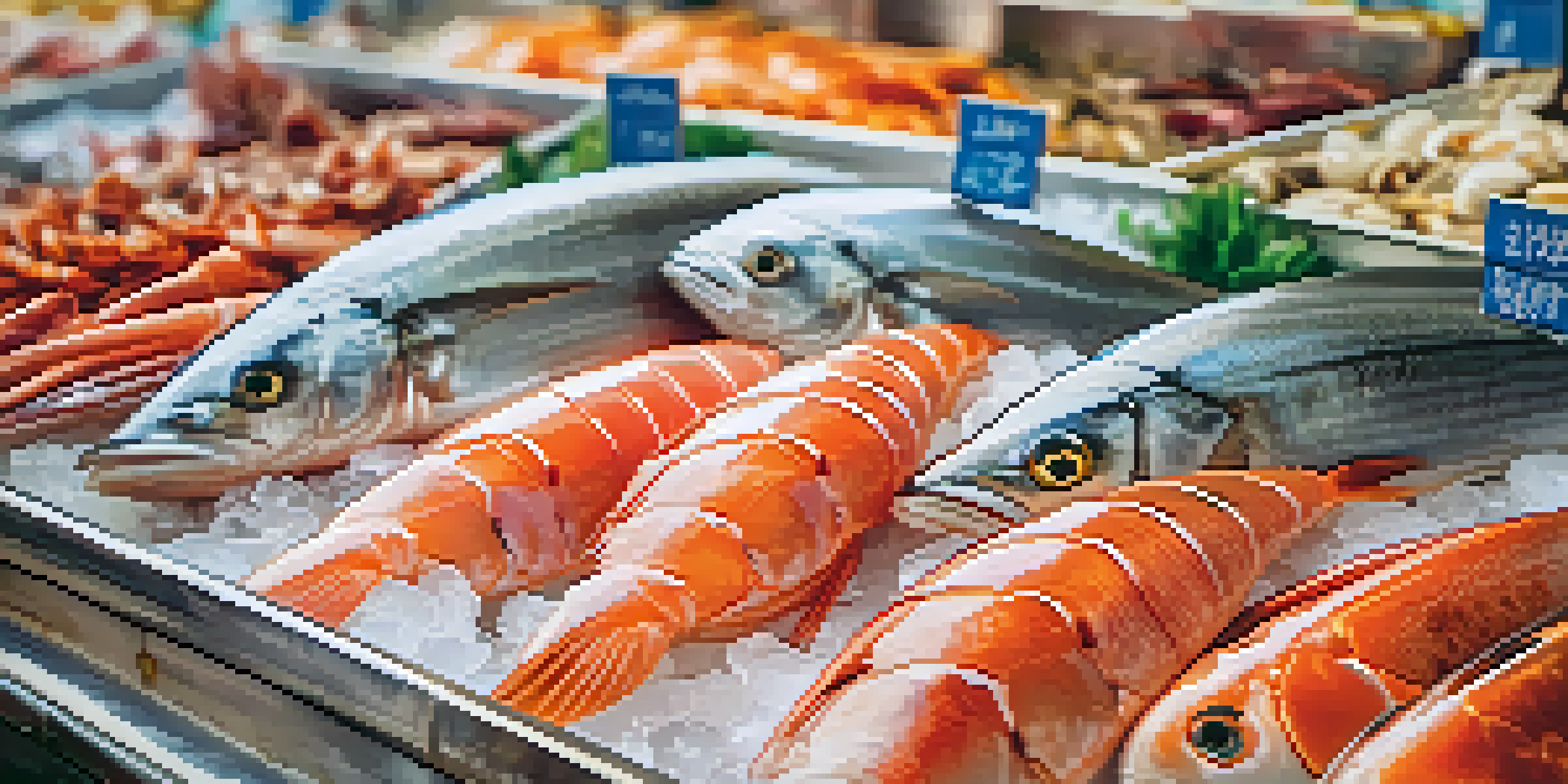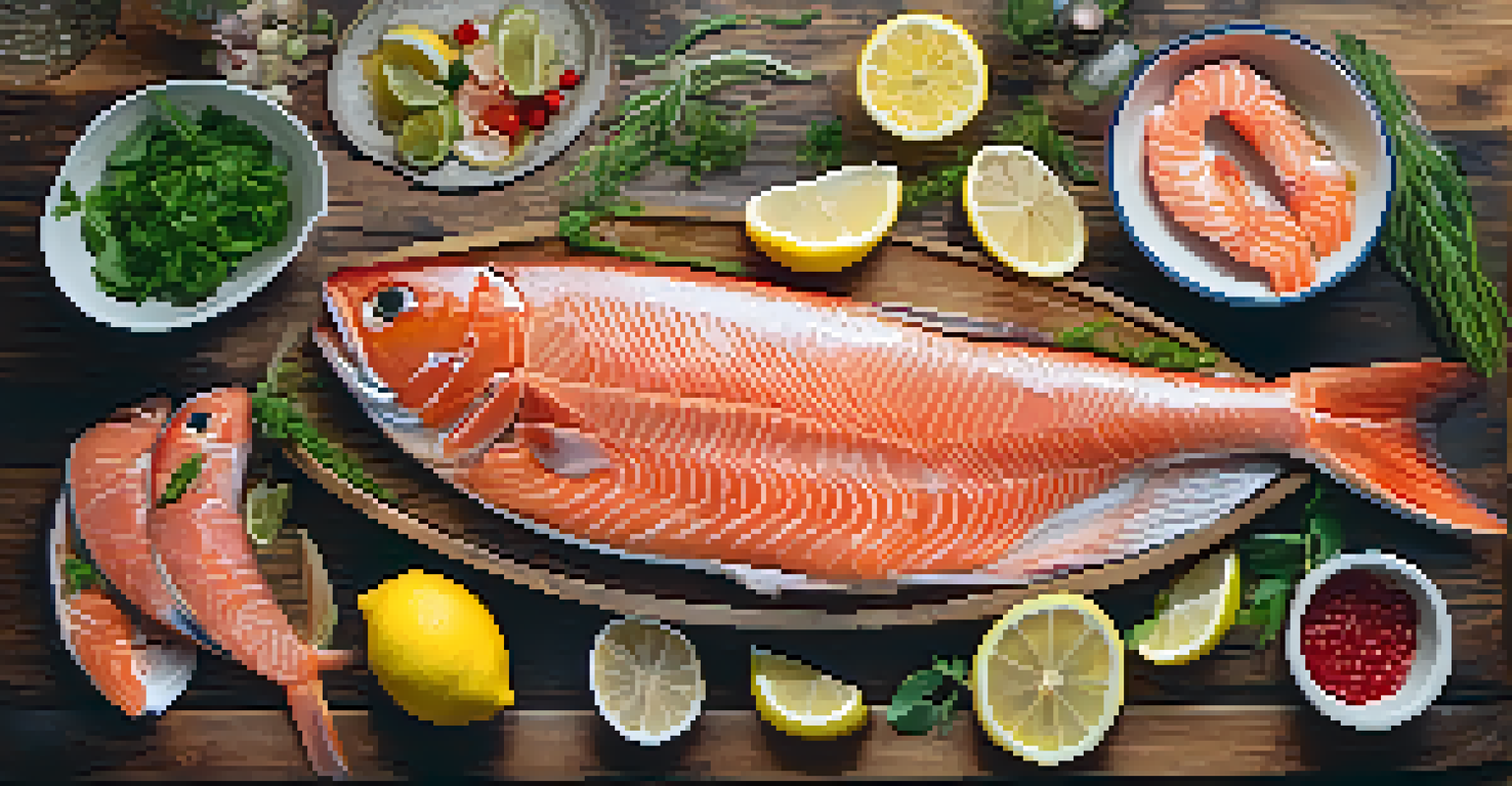Identifying Quality Seafood: Tips for Home Cooks

Understanding Seafood Freshness: What to Look For
Freshness is key when it comes to seafood. Whether you’re at a market or a grocery store, you should be able to see clear signs of freshness. Look for vibrant colors, a clean smell, and firm textures that indicate the seafood is at its best.
Eating good fish is about sustainability, freshness, and knowing where your food comes from.
For fish, the eyes should be clear and bright, not cloudy, while the skin should be shiny and moist. Shellfish should have a tightly closed shell or close when tapped, signifying they are alive and fresh.
Don't hesitate to ask questions! A knowledgeable fishmonger can provide insights into the best choices and even share tips on preparation.
Smell Test: Identifying Quality Seafood by Scent
One of the easiest ways to gauge the quality of seafood is by its smell. Fresh seafood should have a mild, ocean-like scent; anything overly fishy is a red flag. Think of it this way: if it smells like the ocean breeze, it's likely fresh.

When you’re at the market, take a moment to inhale the aroma. If the scent is reminiscent of ammonia or has a sour note, it’s best to steer clear.
Freshness is Crucial for Seafood
Look for vibrant colors, a mild ocean scent, and firm textures to ensure the seafood you're buying is fresh.
Just like you wouldn’t buy spoiled milk based on its smell, the same principle applies to seafood. Trust your nose!
Checking the Texture: Firmness is Key
The texture of seafood can tell you a lot about its quality. When you press on fish, it should bounce back, indicating that it’s fresh and hasn’t started to break down. If it leaves an indentation, it’s likely past its prime.
The best seafood is always the freshest, which means it’s best to buy local.
For shellfish, a firm shell is a good sign. If you can easily press down and it gives way, it may not be fresh. That firmness is akin to how a quality steak feels when you touch it.
Remember, a good texture is not only a sign of freshness but also contributes to the overall eating experience.
Color Matters: Picking the Right Seafood
Color can be an important indicator of freshness in seafood. Bright, vibrant colors generally suggest that the seafood was recently caught. For example, fresh salmon should have a rich, pink hue, while shellfish should display their natural colors without any dullness.
However, be cautious! Some seafood may be dyed to enhance its appearance, so it's important to know what the natural color should look like.
Support Local Seafood Sources
Buying from local fish markets not only guarantees fresher catches but also supports your community's economy.
Take a moment to compare different options to ensure you’re selecting the freshest choice available.
Buy Local: The Benefits of Fresh Seafood
Whenever possible, consider buying seafood from local sources. Local fish markets or community-supported fisheries often provide fresh catches that haven't had to travel far. This not only supports your local economy but also ensures you're getting the best quality.
In many cases, local seafood is seasonal, meaning you’ll enjoy different varieties throughout the year. Think of it like a delicious surprise each season!
Plus, local fishmongers can offer tips on how to cook the seafood you purchase, sharing their favorite recipes and cooking methods.
Sustainability Matters: Choosing Eco-Friendly Seafood
As you shop for seafood, consider sustainability. Overfishing and destructive fishing practices can harm marine ecosystems. Look for sustainable seafood labels or certifications that indicate responsible sourcing.
Choosing eco-friendly options not only benefits the environment but can also lead you to discover lesser-known, delicious seafood varieties that are often overlooked.
Sustainability Matters in Seafood
Opt for eco-friendly seafood options to help protect marine ecosystems while enjoying diverse and delicious varieties.
Educating yourself on what’s in season and what’s sustainable can enhance your culinary adventures while supporting the health of our oceans.
Storage Tips: Keeping Seafood Fresh at Home
Once you've selected your seafood, storing it properly is essential to maintaining its quality. Keep seafood cold, ideally at 32°F, and store it in a leak-proof container to prevent cross-contamination with other foods.
If you're not cooking it immediately, consider freezing it. Most seafood freezes well, but be sure to properly wrap it to avoid freezer burn. This means sealing it in airtight bags or containers.

Remember, fresh seafood has a short shelf life, so cooking and enjoying it soon after purchase will yield the best flavors.